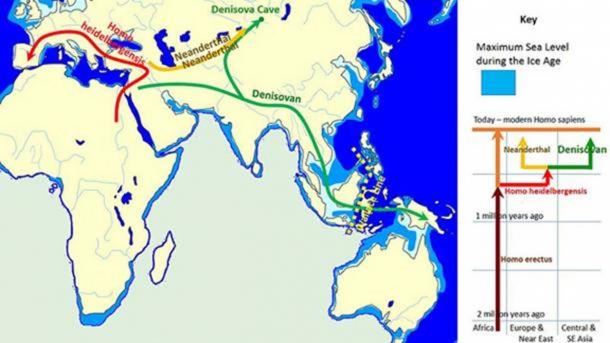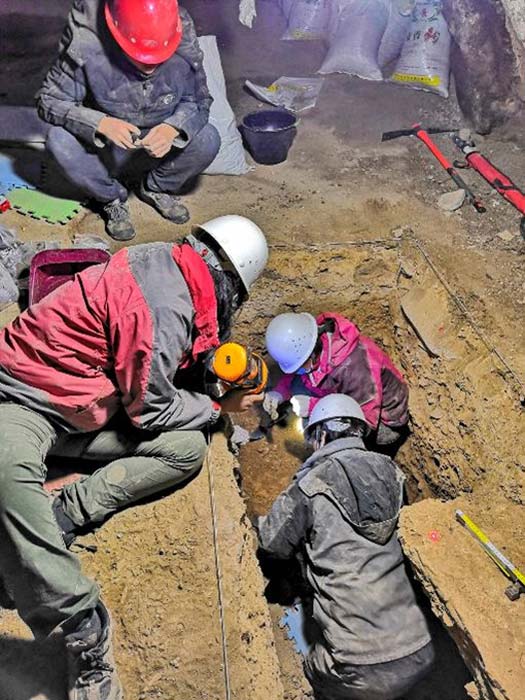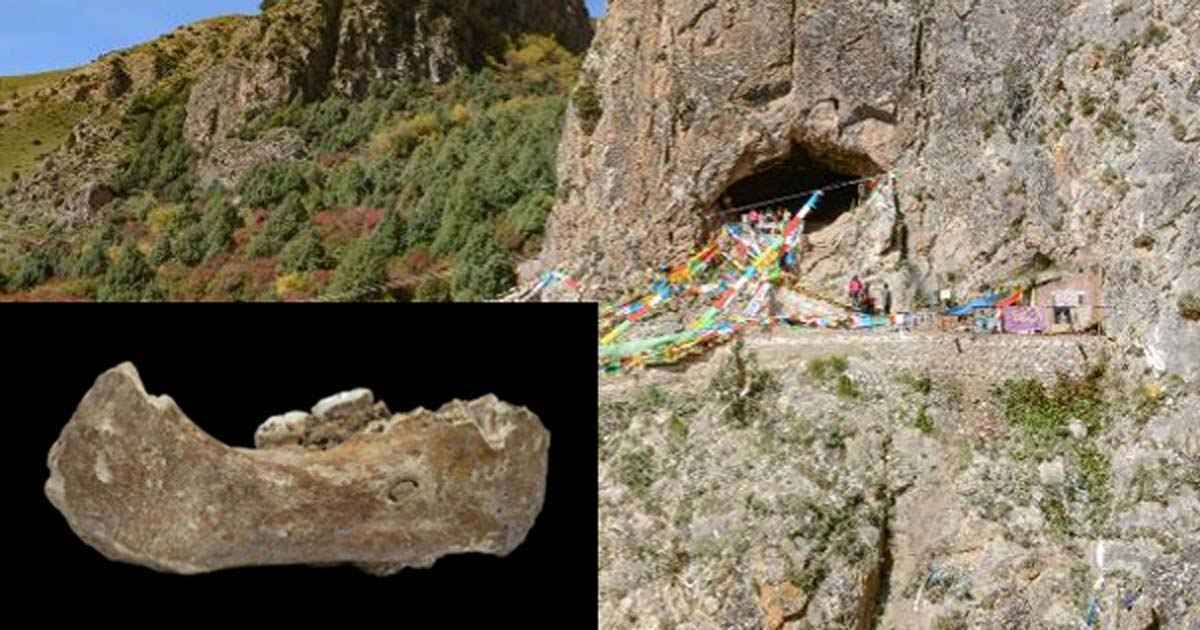Denisovan Jaw: The First Physical Evidence for the Mysterious Hominins Outside Their Original Cave!
Research into the Denisovan story is always fascinating. This group of ancient hominins has been something of a mystery ever since they were first discovered in 2010 as an extinct sister group to the Neanderthals. Bits and pieces of their tale are slowly coming to light and almost everything is a surprise. Take for example the new research on the first example of Denisovan remains found outside their famous Siberian cave; the location has shocked researchers for a couple of reasons.
First, although Denisovan DNA has been identified all across Asian, Australian, and Melanesian populations, Science Daily points out that this is the first time researchers have identified the physical remains of a Denisovan outside the cave that gave them their name, Denisova Cave, in Siberia.

The spread and evolution of Denisovans on the basis of evidence available in 2014. (John D. Croft/ CC BY SA 3.0 )
And secondly, the Denisovan mandible fragment was found in what is now the Tibetan Plateau in Xiahe, China – a location with an altitude over 8,000 feet (2438.40 meters) above the cave where all other Denisovan remains have been discovered. This has brought up questions about when the adaptive genes to live in low-oxygen environments emerged in the region.
- A Trove of New Denisovan Discoveries Revealed At A Recent Anthropological Conference
- Modern Humans Could Have Mated With Denisovans as Recently as 15,000 Years Ago
- Extinct Denisovans from Siberia Made Stunning Jewelry. Did They Also Discover Australia?
The Xiahe Jaw
According to National Geographic, an anonymous monk discovered the prehistoric hominin jaw fragment in Xiahe’s Baishiya Karst Cave in 1980. He gifted it to the 6th Gung-Thang Living Buddha who later gave it to Lanzhou University. The jaw had sat in the university collection for 30-plus years, before study co-author Dongju Zhang of Lanzhou University decided the hominin mandible was worth a look in 2016.

Baishiya Karst Cave in Xiahe, China. (Dongju Zhang, Lanzhou University)
And she was lucky she did. An initial examination of the mandible’s morphology showed it didn’t have the elongated teeth of Homo erectus or the chin of Homo sapiens – both groups with a high quantity of remains across mainland Asia. But the size of the teeth suggested something that at first may have seemed a little out there – the teeth similar to examples found in Denisova Cave with Denisovan DNA.
Heavy carbonate crust was attached to the mandible and U-series dating told researchers that the jaw is at least 160,000-years-old. Another fascinating find because Chuan-Chou Shen from the Department of Geosciences at National Taiwan University, who conducted the dating, says that “This minimum age equals that of the oldest specimens from the Denisova Cave.”
The Proof is in the Protein?
The researchers didn’t discover any DNA preserved in the fossil, so they had to find an alternative method to identifying if the remains were actually Denisovan. Frido Welker of the MPI-EVA and the University of Copenhagen, explained that ancient protein analysis on the protein extracted from one of the molars showed that “the Xiahe mandible belonged to a hominin population that was closely related to the Denisovans from Denisova Cave.”

The Xiahe mandible, only represented by its right half, was found in 1980 in Baishiya Karst Cave. (Dongju Zhang, Lanzhou University)
One issue with the protein analysis is the depth to which it can pinpoint which of the Denisovan groups the individual belonged to, or if they may have been in another sister hominin group. Earlier this year Andrew Collins explained “that there might well have been three different types of Denisovans in existence at one time.”
Excavators went to the Baishiya Karst Cave to see what other secrets it may hold. But to date researchers have only found large animal bones with cut marks and stone tools, and they can’t be certain if Denisovans were the ones who manipulated these artifacts. No other potential Denisovan remains have been identified.
- Where in the World are our Neanderthal and Denisovan Ancestors?
- The Coming of the Thunder People: Denisovan Hybrids, Shamanism and the American Genesis
- Neanderthal Mother, Denisovan Father! Concrete Proof that Hybrid Hominin Families Did Exist

Excavating in the Baishiya Karst Cave. (Dongju Zhang, Lanzhou University)
Adapting and Spreading Genes
Denisova Cave has an altitude of 2,296 feet (699.82 meters) and the Baishiya Karst Cave where the mandible fragment was found is at an altitude of 10,761 feet (3279.95 meters). A press release by the Max-Planck Institute states that this is the earliest hominin fossil found to date on the Tibetan Plateau and that means that the people living in the area “had already adapted to living in this high-altitude low-oxygen environment long before Homo sapiens even arrived in the region.”
However, as National Geographic notes “While the jaw was found where oxygen levels are low, without the DNA itself, scientists can't be sure the jaw’s owner carried the adaptation to survive in that thin air.”
What Other Questions Does this Denisovan Discovery Raise?
Denisovans themselves were only identified as a distinct hominin group in 2010 when a research team sequenced the genome of a fossil finger bone found at Denisova Cave in Russia and showed that it belonged to a hominin group that was genetically distinct from Neandertals.
The results of the current study makes other researchers working at high altitude caves in Asia wonder about the remains they have found, or may find in the future. Discoveries previously believed to be Neanderthal remains may actually be Denisovan…or another unknown ancient hominin. The prehistoric hominin family tree is ever-expanding and diversifying!
Top Image: Baishiya Karst Cave in Xiahe,China. Source: (Dongju Zhang, Lanzhou University) Insert: The Xiahe mandible, only represented by its right half, was found in 1980 in Baishiya Karst Cave. (Dongju Zhang, Lanzhou University)



















